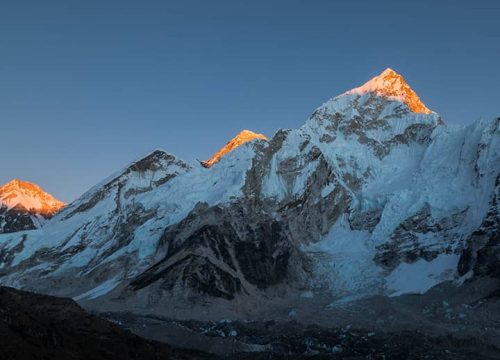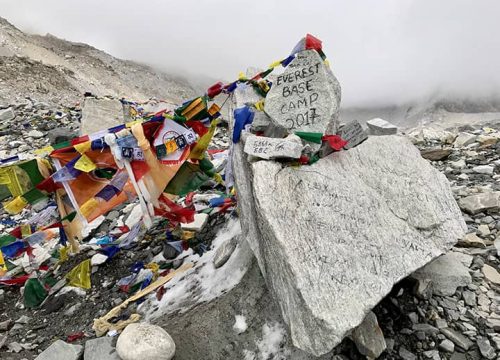Trekking in Nepal is a dream for adventurers around the world. Choosing the best time to trek in Nepal can make your journey more enjoyable, scenic, and safe. Nepal offers diverse trekking seasons, each with its unique charm. From the crystal-clear skies of autumn to the vibrant blooms of spring, every season brings something special for trekkers. Understanding these seasons will help you plan your trek to suit your preferences and physical preparation.
If you are new to trekking in Nepal, check out our Nepal Trekking Packages for routes suited to different times of the year.
Autumn (September to November) – The Peak Trekking Season
Autumn is widely regarded as the best time to trek in Nepal. During this period, the monsoon rains have washed the dust from the air, revealing clear mountain vistas. The weather is stable, and the temperatures are moderate, making it ideal for both short treks and challenging expeditions like the Everest Base Camp Trek.
Many travelers choose this season because of its low rainfall, excellent visibility, and festive atmosphere. Major festivals like Dashain and Tihar occur during these months, adding cultural flavor to your trekking experience. According to Nepal Tourism Board, over 50% of annual trekkers arrive during this season.
Spring (March to May) – A Season of Blooms
Spring is another popular trekking season in Nepal. The trails are adorned with rhododendron blossoms, and the weather is pleasantly warm. Treks like the Annapurna Base Camp Trek offer stunning views of snow-capped peaks alongside colorful forests.
This is also the best season for mountaineers aiming for high peaks, as the weather is relatively stable. Wildlife is active, and photographers will love the vibrant landscapes. For detailed climate data, visit the Department of Hydrology and Meteorology Nepal.
Winter (December to February) – Quiet Trails and Clear Views
While winter brings colder temperatures, it also offers peaceful trails and exceptionally clear skies. Trekkers who enjoy solitude will appreciate routes like the Langtang Valley Trek, where you can experience authentic village life without large tourist crowds.
Lower altitude treks are recommended during winter to avoid extreme cold at higher passes. Packing proper winter trekking gear is essential.
Monsoon (June to August) – Lush Landscapes and Fewer Crowds
Monsoon season is the least popular time for trekking in Nepal due to heavy rainfall and leeches on certain trails. However, for adventurous travelers, this season offers lush greenery, vibrant waterfalls, and fewer trekkers.
Rain-shadow regions like Upper Mustang Trek and Dolpo are excellent choices in monsoon, as they receive minimal rainfall. Learn more about trekking in rain-shadow areas from Lonely Planet.
Which Season Should You Choose?
If you prioritize clear skies, comfortable temperatures, and vibrant cultural experiences, autumn is your best bet. For colorful landscapes and warmer conditions, spring is ideal. Winter is perfect for solitude seekers, and monsoon is for the adventurous who want to explore off-the-beaten-path trails.
For a personalized trekking plan, explore our Custom Trekking Itineraries.
Final Tip: Whichever season you choose, ensure that your gear and itinerary match the weather conditions. Staying updated on forecasts and trail conditions will help you make the most of your Himalayan adventure.





